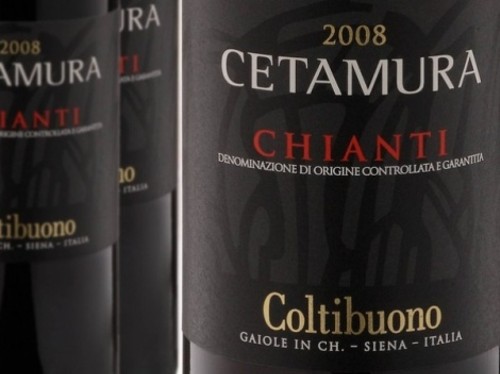A few weeks ago, I had the pleasure of chatting with Italian winemaker Roberto Stucchi during his visit to Utah, while sipping his terrific Chiantis at Pago restaurant. His family’s winery, Badia a Coltibuono, is located in Tuscany on the edge of the Chianti Classico zone. Badia a Coltibuono means “abbey of the good harvest,” and it’s a sprawling 1,000-year-old property with vineyards that were among the first ever planted in the Upper Chianti area. Take a look at a photo of Badia a Coltibuono if you get a chance; it would not suck to live there.
In addition to Chianti, Badia a Coltibuono also produces world-class olive oil, and Stucchi is just as eager to talk about his family’s olive oils as wine. In fact, when I met him, he was just coming from San Francisco's Fancy Food Show, where his organically produced Olio d’Uliva, Albereto and Campo Corto olive oils were featured, along with his balsamic and red-wine vinegars. Caputo’s Market & Deli is planning to carry some of the olive oils.
But, back to the wines. Stucchi isn’t fond of the trend in Italy toward making New World-style or Bordelaise wines. He believes Italian wines should be Italian. In that sense, he’s somewhat of a throwback. He doesn’t aim for high alcohol in his wines, and prefers making them with traditional, indigenous grape varieties like Sangiovese over international ones. Sangiovese, after all, has been called “the soul of Chianti wine.” Nor does Stucchi believe in “fattening” Chianti by blending in Merlot or Cabernet Sauvignon. He says, “What really bugs me is when an overly concentrated and heavily oaked, muscular wine pretends to be a Sangiovese.”
The Coltibuono Chiantis range from a very affordable entry-level Cetamura Chianti 2010 to pricier, high-end selections such as Coltibuono Chianti Riserva 1995, which sells for about $75. There are also two Coltibuono labels: Badia a Coltibuono are wines produced solely from the family’s vineyards; a second line of wines, called merely Coltibuono, utilizes grapes purchased from other producers.
Stucchi’s Badia a Coltibuono Chianti Classico Riserva 2006 ($36) is a traditional blend of Sangiovese (90 percent) and Canaiolo (10 percent). The wine is made from organically grown grapes that are hand-picked. It spends 24 months in French and Austrian oak, followed by a minimum of four months bottle-aging. Too much Chianti is unremarkable: cheap, easy-drinking wine that is rarely memorable. This one is different. Badia a Coltibuono Chianti Classico Riserva 2006 tastes terrific right now, but it’s also age-worthy. Dark berry flavors combine with spice and tobacco in this intense ruby-red wine—intense, yes, but also soft, with abundant acidity, making it an exceptional wine to pair with food. This Chianti absolutely killed with a plate of Pago’s Wagyu bavette-cut steak salad with charred romaine, blue cheese, fingerling potatoes, green beans and shallot vinaigrette.
At the lower end of the Coltibuono spectrum is the affordable Cetamura Chianti 2010 ($10.99). This wine won’t knock your socks off; it’s not designed to. It is, however, a pleasant, easy-drinking Chianti, but with more depth than you might expect for the price. It’s soft, with bright cherry and blackberry aromas and subtle hints of clove and cinnamon. It’s a perfect “spaghetti red” that also pairs nicely with pizzas and grilled meats.
A step up from the Cetamura is Coltibuono Chianti Classico 2008 ($21.99), which is made from 100 percent Sangiovese and is earthier and more substantive than Cetamura, but still a soft Chianti, with nicely balanced acidity—a very food-friendly wine. It was the bomb sipped at home alongside risotto made with Creminelli salami.Â
More by Ted Scheffler
-
Flavor on the Western Front
Nomad Eatery ups the ante for off-airport eats.
- Dec 13, 2017
-
Under the Christmas Tree
Holiday gifts for cooks, foodies and winos
- Dec 6, 2017
-
Spreading the Love
Amour Café creates simple yet scrumptious fare.
- Nov 29, 2017
- More »





